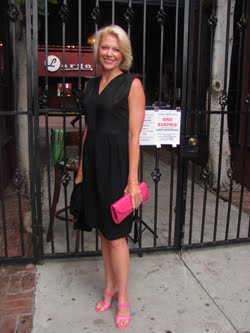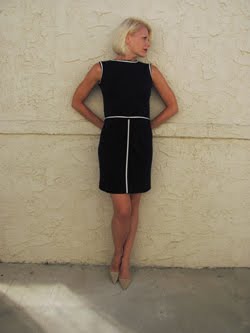The Killers is a film filled with breakthroughs. It was Burt Lancaster's first movie (at the ripe old age of 32), but in many ways it seemed like Ava Gardner's, too. Both of them became big stars overnight. Though Ava had been with MGM since 1941, it was her loan to Universal to make The Killers that led to her breakthrough performance. MGM had hired Ava for her obvious beauty--photographs of her segued to a screen test that resulted in Louis B. Mayer famously pronouncing, "She can't sing, she can't act, she can't talk. She's terrific!" Yes, she was stunning, but it was her magnetism while simply standing onscreen that really evoked Mayer's enthusiasm. You couldn't take your eyes off her. Yet MGM couldn't seem to put her in substantive roles that capitalized on all Ava had to offer. It took the great independent producer Mark Hellinger (High Sierra, The Naked City) to recognize she could go beyond being simply a sexpot (though she certainly was that, too) and had much more simmering beneath the surface. He fought to borrow the worldly 23-year-old siren from MGM, and the role of femme fatale Kitty Collins made her the icon she is today. Ava knew it; it was Hellinger she credited for the success of her career.
The Killers was a hit with the public and critics alike, and justifiably nominated for four Academy Awards. Among those nominations, one was for Best Adapted Screenplay and that, too, can be traced to a contribution from Hellinger. It was he who got the film rights from friend Ernest Hemingway for one of his short stories. That said, though the opening 20 minutes of the film are true to Hemingway's original story, the remaining plot comes from screenwriter Anthony Veiller and, significantly, uncredited contributions from writer/directors John Huston (The Maltese Falcon) and Richard Brooks (Cat on a Hot Tin Roof). The characters and plot that these men created would inspire many more to come, such as Quentin Tarantino for Pulp Fiction (1994). Another Oscar nomination went to The Killers' director Robert Siodmak, well-deserved for the deep focus photography and extraordinary expressionist lighting that he and cinematographer Woody Bredell used to compose the film's impressive images. Not surprisingly, Siodmak was born in Germany and started his career at UFA, the studio which gave birth to German expressionism in films such as Metropolis (1927) and Pandora's Box (1929).
Part of The Killers' visual style of course also comes from its incredible wardrobe, and the film should be considered a breakthrough for costume designer Vera West as well. She is lesser known in the pages of film history, always surprising considering her immense talent and extensive career. She began in fashion at the prestigious Lucile couturier--along with other costume design giants Howard Greer, Travis Banton, and Robert Kalloch--and then had a salon on New York City's 5th Avenue. She then became head of costume design at Universal from 1928 to 1947, which means Vera's career in film lasted longer than legendary contemporaries Adrian at MGM and Banton at Paramount.
That said, sadly one Oscar that The Killers was NOT nominated for was costume design. This was not any oversight of the voters that year, but rather an oversight of the Academy itself; as I have oft discussed, the award for costume design was not even created until 1948. This means that the nearly two decades of costume design since the beginning of the Oscars in 1929--much of it now iconic, as shown through The Style Essentials--was completely ignored by the Academy. Thus, my way of righting some of this wrong is to celebrate it here on GlamAmor. With regard to The Killers, let me just say that there are many black dresses from film that have made an impact on fashion, but the one from this movie is among the greats. And so, during this Oscar season, for your consideration: Vera West's costume design for Ava Gardner in 1946's The Killers.
The opening shows some of Woody Bredell's cinematography and
director Robert Siodmak's composition that has made The Killers so great
The two killers enter a room at the beginning of the film
that means the end for The Swede (Burt Lancaster)
Back to the beginning--flashbacks begin to tell the tale of how The Swede
meets and falls for femme fatale Kitty Collins (Ava Gardner)
The Swede can't take his eyes off Kitty and even his date doesn't blame him...
after all, she's wearing a one-shouldered gown so iconic it continues to influence fashion
Cinema Connection to fashion--Christian Dior for Mila Kunis at the 2012 Golden Globes (above)
and Donna Karan for Sofia Vergara on the 2013 SAG awards red carpet
Even in a seemingly innocent skirt and sweater, Kitty is trouble
as the rest of the guys plot their own
The sweater and skirt was first made popular on stars like Clara Bow in It (1927),
but came on strong in the 1940s with "Sweater Girls" like Ava and Lana Turner
Function and fit were the order of the day in the fabric-rationed 1940s,
so that helped make simple pencil skirts and blouses like this in fashion
The sweetheart neckline was extremely popular in the 1940s
and no one did it better than Ava who led men to their doom in dresses like this
Though the trench coat was first made popular for women by Greta Garbo in Woman of Affairs (1928),
film noir made it popular again through femmes fatales like Kitty Collins
If you're interested in learning more about The Killers and the best of 1940s costume design,
take a look at my past webinar from my HISTORY OF FASHION IN FILM series!
This article is also featured in Week Two of the great 31 Days of Oscar Blogathon













































































































